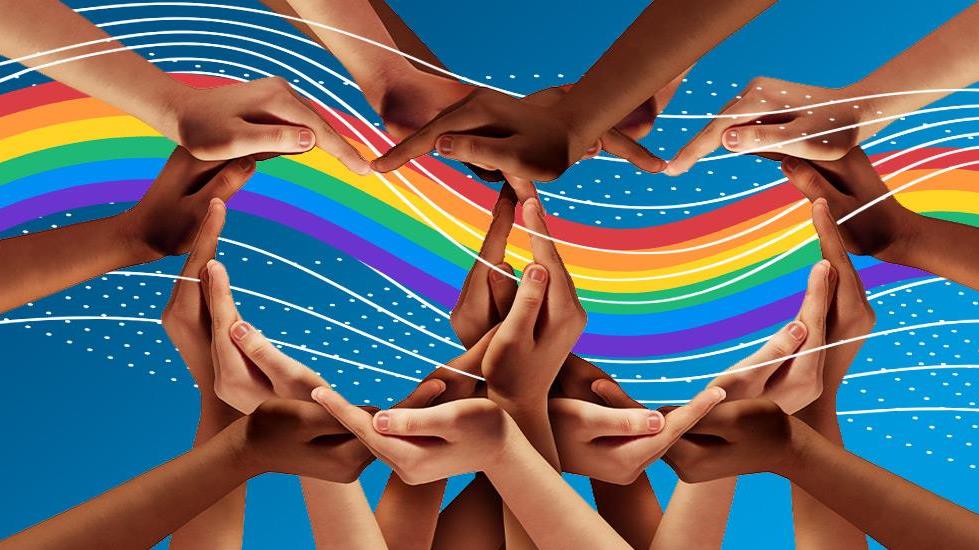Each June, Pride Month offers an opportunity to celebrate, support, and stand in solidarity with the LGBTQ+ community. But being an ally isn’t just about rainbows and hashtags—it’s about creating safe, inclusive, and affirming spaces, especially for vulnerable populations.
Su Chafin, NCC, LPCMH, a Family Medicine Residency Behavioral Health Faculty member and licensed psychotherapist, has spent over a decade specializing in mental health care for LGBTQ+ youth and families. Her journey as an ally began with a deep realization of the disparities faced by LGBTQ+ individuals and evolved into a passionate, ongoing mission to advocate for change and acceptance in healthcare and beyond.

Understanding the Call to Allyship
How Data Sparked a Personal and Professional Transformation
Over 10 years ago, Su Chafin was working in school-based mental health services at Bayhealth Wellness Centers. When she reviewed findings from the CDC’s Youth Risk Behavior Survey (YRBS), the results were both startling and illuminating.
The data clearly showed elevated risks across all areas for LGBTQ+ youth—including mental health issues, substance abuse, and suicide. This marginalized group was suffering disproportionately, and the statistics were impossible to ignore.
That question propelled Su to begin researching, learning, and actively advocating for LGBTQ+ students. The result? A deeper understanding of the issues, greater compassion, and a fierce commitment to being part of the solution.
Creating Safe Spaces in Schools and Communities
The Rise of Gender Sexuality Alliances (GSA)
Su joined a team of counselors focused on creating safe and welcoming spaces within Delaware’s school systems. Their efforts led to the development of Gender Sexuality Alliances (GSAs) in nearly every high school and many middle schools throughout the state.
GSAs serve as sanctuaries—places where LGBTQ+ students and their allies can gather, share, and support one another without fear of judgment or discrimination. These clubs are not just social groups—they’re essential for promoting mental health, inclusion, and visibility.
The A in LGBTQIA+: Why Allies Matter
While the acronym LGBTTQQIAAP (Lesbian, Gay, Bisexual, Transgender, Transsexual, Queer, Questioning, Intersex, Asexual, Ally, Pansexual) can seem overwhelming, each letter holds meaning. And for Su Chafin, the “A” for Ally is especially important.
Being an ally means stepping up, speaking out, and committing to the journey of learning and advocacy. It’s about compassion without condition and showing up, even when it’s uncomfortable.
Actionable Steps to Becoming an Effective LGBTQ+ Ally
1. Create Safe, Affirming Spaces
Whether in healthcare settings, schools, or communities, the most powerful thing you can offer is a safe space. This means:
- Listening without judgment
- Avoiding assumptions
- Respecting names, pronouns, and identities
- Providing a physical environment that feels welcoming
When people feel safe, they are more likely to share, trust, and seek support—especially in healthcare.
2. Use Inclusive and Affirming Language
Language matters. Avoid outdated or offensive terms. Instead, use inclusive language that affirms people’s identities. This includes:
- Asking for pronouns
- Saying “partner” instead of assuming gender
- Avoiding phrases that marginalize or stereotype
Inclusivity in language helps reduce harm and builds rapport with patients and colleagues alike.
3. Explore and Address Personal Bias
Unconscious bias affects everyone, but awareness is the first step to growth. Su encourages healthcare professionals to reflect on their motivations:
Reflecting on personal beliefs, listening to marginalized voices, and continuing education are essential components of growth as an ally.
4. Educate Yourself on LGBTQ+ Terminology and Best Practices
Early in her career, Su admitted she didn’t have the tools to treat a transgender patient undergoing gender-affirming surgery. That patient was put in the uncomfortable position of teaching the provider.
Today, with a wealth of resources available online, there’s no reason to remain uninformed. Education breaks down ignorance, builds trust, and enhances quality of care.
Why Pride Month Is the Perfect Time to Step Up
Pride Month is more than a celebration—it’s a call to action. Whether you’re a healthcare provider, teacher, parent, or friend, your support can profoundly impact the mental, emotional, and physical well-being of LGBTQ+ individuals.
Frequently Asked Questions:
1. What does it mean to be an ally to the LGBTQ+ community?
Being an ally means standing in support of LGBTQ+ individuals through advocacy, education, compassion, and action. It’s about listening, learning, and using your voice to create a more inclusive world.
2. Why is inclusive language important in healthcare?
Inclusive language builds trust, avoids harm, and affirms the identities of patients. It’s a key component of culturally competent care.
3. What are Gender Sexuality Alliances (GSAs)?
GSAs are student-led organizations in schools that create safe and affirming spaces for LGBTQ+ youth and their allies to support one another and promote inclusivity.
4. How can healthcare providers educate themselves on LGBTQ+ care?
There are numerous online resources, including professional development programs, glossaries, and healthcare associations like GLMA that offer training and guidance.
5. Why is Pride Month significant for allies?
Pride Month is an ideal time to reflect on your role as an ally, learn more about LGBTQ+ issues, and recommit to inclusive actions that support equality and acceptance.